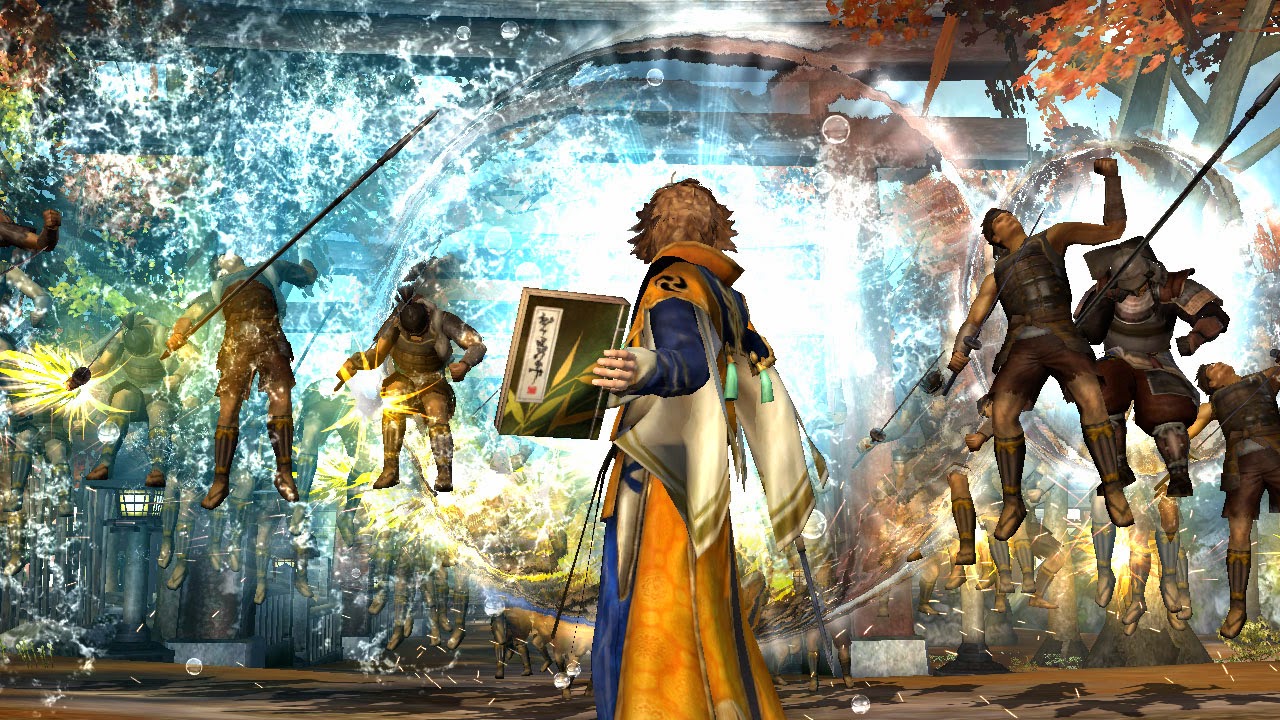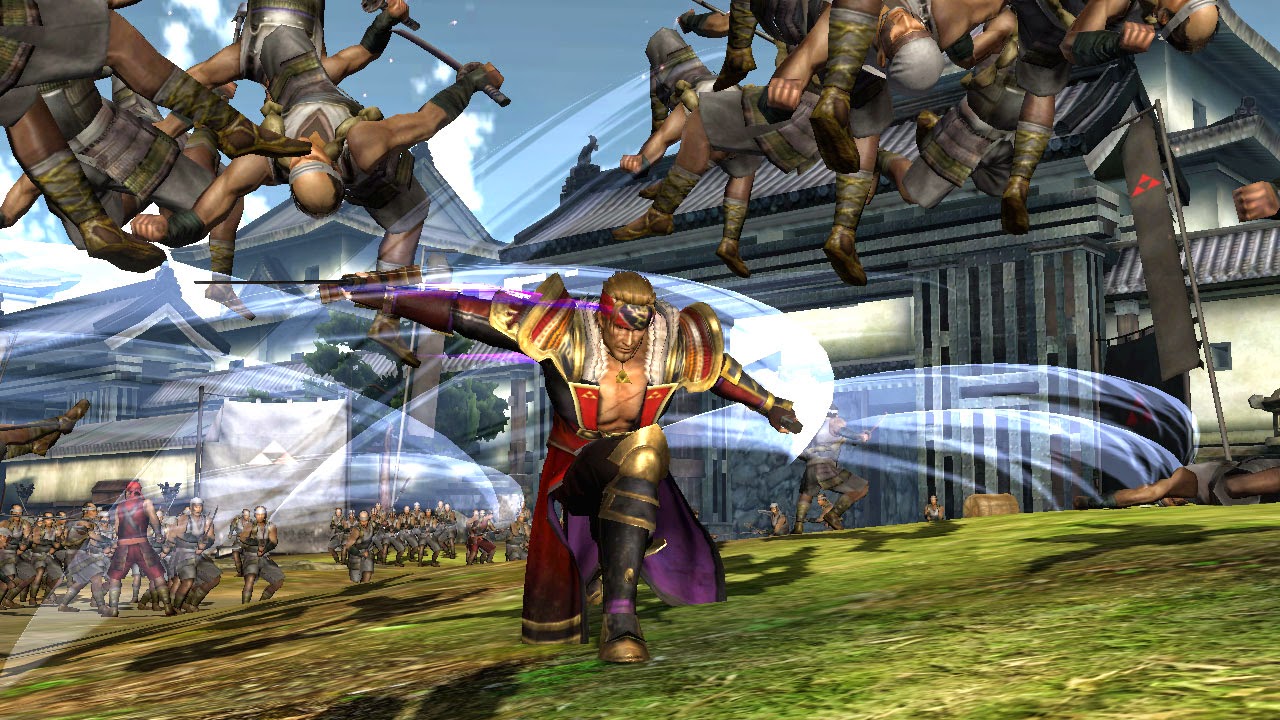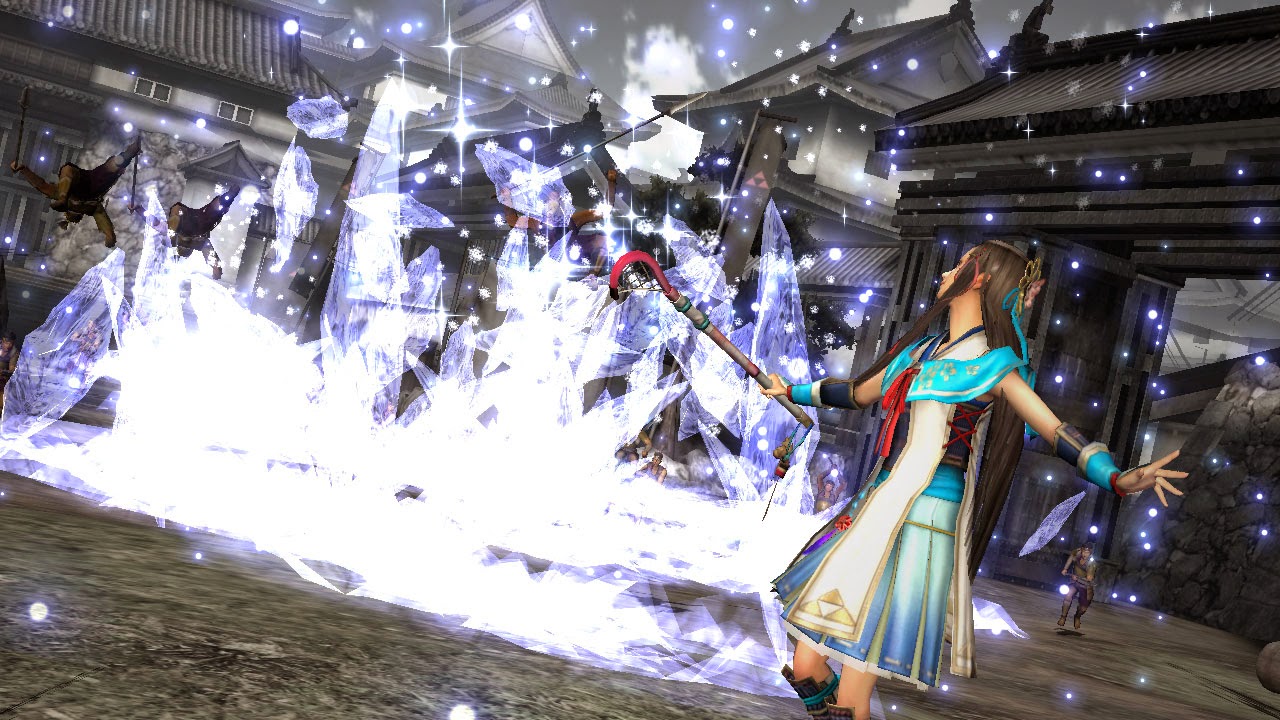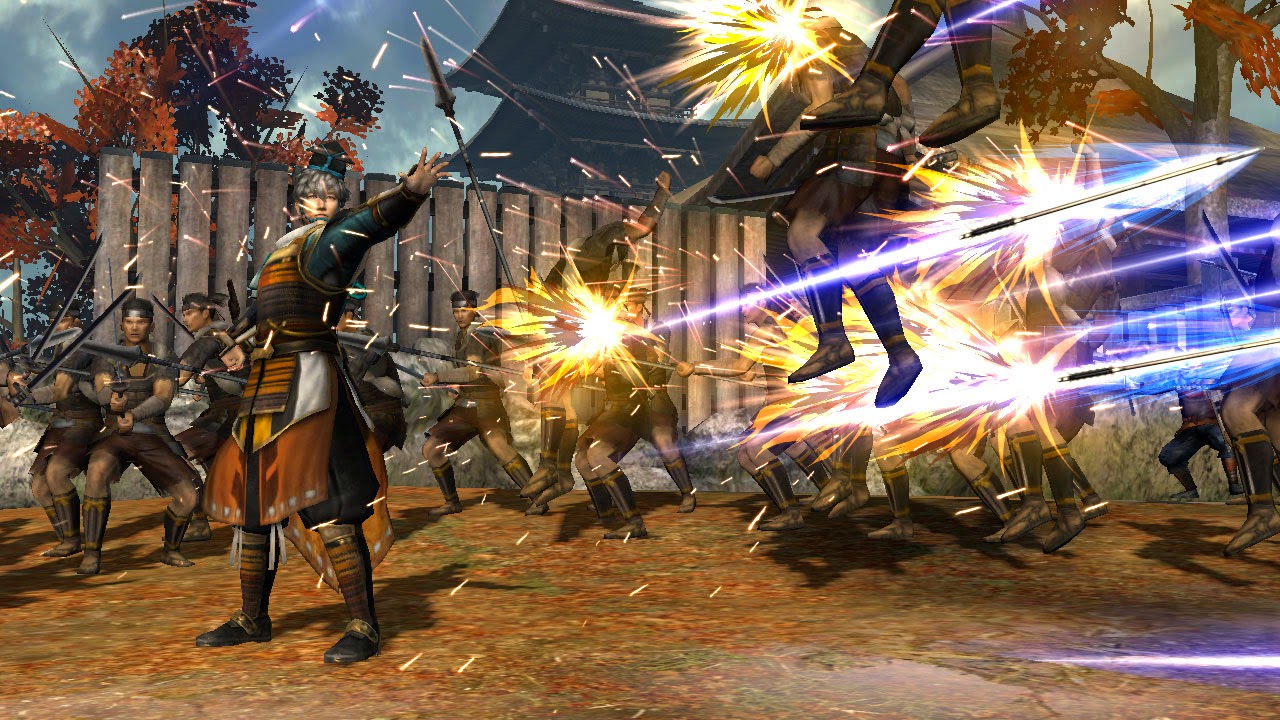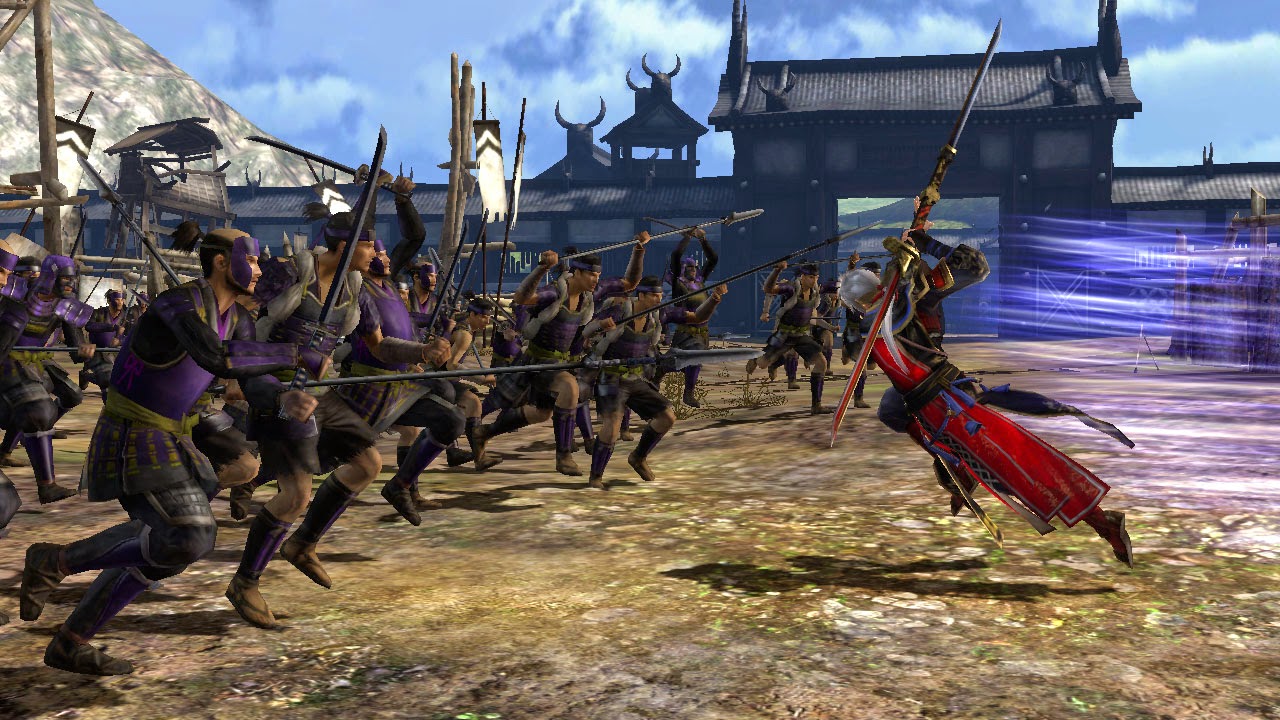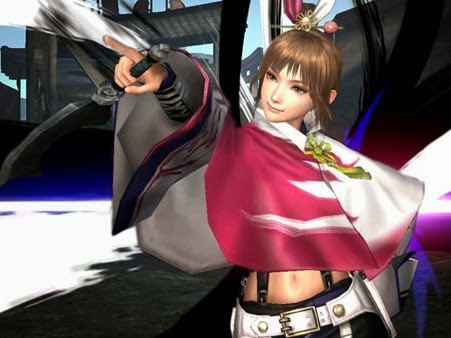 Review by Matt S.
Review by Matt S.
Given that I am such a fan of Koei Tecmo’s Warriors franchise, people are often surprised to hear that I came to the series quite late. My first Warriors game was, in fact, Samurai Warriors 3 on the Nintendo Wii.
And I wasn’t going to play that either, except that I needed to write a review of it. For years I had ignored the series, swayed away from it by the general media’s insistence that the games were “horrible, repetitive, boring button mashers.” So it was with no small trepidation that I stuck that disc in my Wii U, expecting to have every moment of my time with it. To this day I kick myself that it took me so long to get into the franchise.
I spent around 250 hours on Samurai Warriors 3. It was my second played Wii game, according to the time log that the console kept, eclipsing both Mario Galaxy games, both Zelda Wii games, and even the likes of Chocobo Dungeon (I’m a roguelike tragic) and Fortune Street (I’m also a board game tragic). The only game I played more on that console was Smash Bros. Brawl, and that was only because of the local multiplayer. I fell in love with Samurai Warriors 3 almost the moment I started on it, and from that point onwards I’ve been a Warriors tragic, having played (and loved) every single game released in the franchise since.
But Samurai Warriors 3 has always been my favourite, and for a very simple reason; I have found myself far more interested in Sengoku history than I am of China’s Three Kingdoms (the basis of Dynasty Warriors), Troy (Warriors: Legends of Troy), or the manga properties that Koei licenses to build Warriors games around, such as One Piece, Legend of Zelda, or Fist of the North Star. In fact, it was because of Samurai Warriors that I actually got interested in Japanese history. I have developed a very real (and encyclopedic) knowledge of Sengoku Japan (which far exceeds the knowledge of even most Japanese people) thanks to the inspiration that the game provided me. I’ve visited the castles and battlegrounds of the era, and am very seriously considering going back to university in order to get a formal degree in Japanese history and broaden my knowledge base beyond the Sengoku period.
How did the game have such an effect on me? After all, one look at any screenshot tells you that Samurai Warriors is not a serious historical simulation. As fanciful as it is, however, the main Warriors games have still remain rooted in real history, with characters and battles that remain true to the era despite the fabrications. Koei Tecmo has always managed to find a way of making fantastic battles and impossible character designs that still somehow remain authentic to the real history of the period, and encapsulates the real character personalities of the time, and as a student of Japanese history, this has been fascinating to unpack and analyse.
And so with all of that in mind let’s get on to Samurai Warriors 4. What a game.
I’ll start with the superficial first: Samurai Warriors 4 is the first Warriors game built with the current generation of consoles as the priority. The PlayStation 4 has three Warriors games on it now – Dynasty Warriors 8: Xtreme Legends Complete and Warriors Orochi 3 Ultimate being the other two – but those games two were old games running on old engine that only had a bit of polish applied to them. Samurai Warriors 4 by contrast is a beautiful, gorgeous game, with interesting environments (where most Warriors games in the past have offered little more than empty pains to wander), and highly detailed, smoothly animated character models, right down to the hundreds of peons that the engine renders on the screen at once. And, for the first time with a Warriors game, pop-in is a nearly non-existent issue. I’m sure it happens and I was simply too busy wading through hordes of enemies to notice, but the jarring effect of enemies only materialising when they are within weapons range is well and truly gone.
Supported by Koei Tecmo’s usual flair for cinematic and intricate cut scenes, Samurai Warriors 4 is itself a highly cinematic game. Everything, from the visual engine, through to the art design, music soundtrack and right down to the menu designs and the map of Japan in the Chronicles mode (more on that soon enough), is built around a clear love for the subject material and it’s in that authenticity to the source material that Samurai Warriors has always been a more engaging and interesting take on the period that the more fanciful likes of Sengoku Busara. It’s easy to create generic anime characters and throw them into a battle royale while claiming it’s related to the Sengoku period. It’s quite another thing to create a game that manages to be entertaining as a game, while maintaining a presentation that has the right aesthetic qualities to match the period.
Once the action starts, Samurai Warriors 4 also reveals itself to be the most fluid and complex combat game that the franchise has seen to date. The most immediately noticeable thing is the raw speed in which the game flows. In the previous Samurai Warriors title there was a ponderous weight about the action. It meant that combat felt visceral, and that each swing of the sword had impact, but the consequence to that was a slowness to the action.
With Samurai Warriors 4, players have at their hands a huge range of combo options. Combos can be started and finished with either weak or strong attacks (where in previous Warriors games it was always the weak attacks to start the combo and the strong ones to finish it). Attacks that start as a strong combo transform the character into a whirling dervish of doom. They’ll leap forward in a mighty explosion of power and then continue to dash around the battlefield as long as you keep using the strong attack button. It’s not very accurate (and the camera struggles to keep up), but the impact is significant, and it’s good for clearing rooms. Then there are the more traditional combos strung together through the weak attack button. As always each of the many characters has their own unique attack types, and learning the most effective ones for each character is part of the joy of having so many to play with (55 in this game).
Then there’s also the “Musou” super attack, which has always been a part of the Warriors franchise, and then another “Rage” mode, which transforms the character into an even faster, stronger, deadlier fighter. Both of these attacks are of course limited in how often they can be executed, so players need to make good use of regular combos to build up the power to unleash these super attacks. Thanks to the speed of combat it can be overwhelming at first to try and string all of this together, but once it starts to click there is nothing quite so satisfying as cutting a path through the battlefield with a combo count in the thousands (literally). Samurai Warriors 4 is anything but a button masher, though. Yes you’ll be mashing buttons, but not mindlessly, for this is a surprisingly intricate combo system and, especially on the harder difficulty levels, demands mastery if you’re going to have any hope of success.
Players will also need to be aware of the flow of the battle around them. While early missions are straightforward enough affairs where characters need only run from point A to point B while wiping out anything in their path, later levels like to throw competing objectives at players, and those objectives are often at opposite ends of the map. Being able to plan out a strategy to handle the conflicting priorities (which are subject to change on the fly as a battle progresses), is a big part of Samurai Warriors 4, and being able to switch between defense of a key point to an all-out attack will test just how much people are paying attention as they play. There is two player multiplayer in the game, and being able to send a buddy to protect a vulnerable point while going to attack a key general helps to deal with some of the harder missions. In fact, on the highest difficulty settings, I’d go as far as to say having a friend to help tackle the hardest missions is essential.
There are two main ways to play Samurai Warriors 4. The first is the story mode, which should be self explanatory. In this mode the Sengoku period is split into twelve or so stories, based on key events and individuals that fought through the Sengoku period. So you’ll be able to fight through the history of the Takeda, or the Oda, or the Hojo, or a half dozen others, and while some of the chapters only have a few battles (as few as four), others have many more, and at around 15 minutes per mission you’re looking at at least 15-20 hours to work through this mode (and that’s before you challenge yourself with higher difficulty settings and the like).
The other mode is the Chronicle mode, which could be seen as an extension of Samurai Warriors game that we got at launch for the Nintendo 3DS. In this mode you’ll create a character, and then take him/ her through Japan fighting fictional battles, building an army of supporters, filling out an encyclopedia of historical biographies and completing other objectives. It offers plenty of additional content in its own right, and all up I can see myself loading about as much time into this game as its predecessor, while more moderate people could still be expected to get 50 or so hours out of it before being “done”. Some will miss the high-score minigames, such as the “how many KOs can you get in XXXX time” that other Warriors games tend to include these days, but remembering the amount of work that went into creating a new Warriors game for a new generation, there is still more than enough content in here to justify the price tag.
If I was to narrow down any criticisms I have of Samurai Warriors 4 (and I’m really scratching here), it’s that the battlegrounds are more enclosed than the ones I remember from Samurai Warriors 3. In that game, battles were open affairs, which in turn preserved the sensation of historical authenticity. In this game Koei Tecmo has opted for a corridors-based approach to battlefields, more reminiscent of the recent Dynasty Warriors games. As levels they work perfectly well and the corridors-based approach does tend to provide players with a better sense of direction where open levels leave room for them to get lost (and therefore frustrated), but I couldn’t help but get a little claustrophobic at times and wish that Koei had kept the brilliant approach to level design of Samurai Warriors 3.
But I’m really stretching to find a complaint there. The reality is that Samurai Warriors 4 is nothing short of brilliant, and a huge leap forward into the new generation of game design by Koei. It’s cinematic, its beautiful, it’s fast and entertaining, and if you allow it to be, it’s even a little educational. And that makes it an inspiration.
– Matt S.
Editor-in-Chief
Find me on Twitter: @digitallydownld

